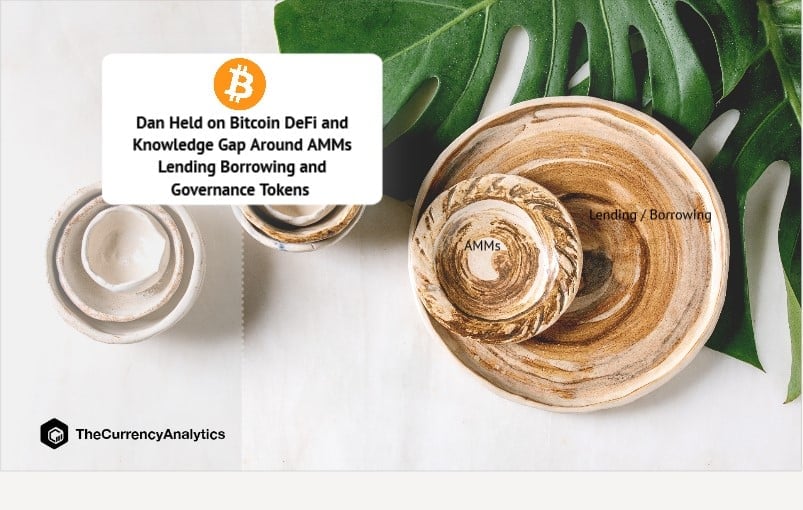
Dan Held: I’ve been exploring Bitcoin DeFi over the last few months and I feel that there is a gap in knowledge around AMMs, Lending, Borrowing, and governance tokens.
DeFi stands for “Decentralized Finance.” The dream is that through blockchain/smart contract technology, traditional financial services can be rebuilt in a world that isn’t permissioned with less risk.
DeFi is often used as a panacea that will solve all existing legacy financial issues. To be clear, it doesn’t, and there are numerous risky structural issues that may or may not be solvable long term (ex: Centralized stablecoins)
Nonetheless, it’s an exciting new experimental way to conduct financial transactions and should be explored. For example, being able to borrow against your Bitcoin and receive dollars or earn a yield on your Bitcoin without a trusted third party.
Note that Bitcoin is already solving the problem of trust with money, and it currently does that elegantly without any new “upgrades (aka 2.0)” or DeFi necessary. DeFi for Bitcoin is a cherry on top of its existing functionality.
This is in stark contrast to other protocols which require them to execute efficiently against dozens of other competitors who are more willing to sacrifice decentralization for throughput, speed, scripting, etc.
Note that I am not advocating that you buy another token other than Bitcoin, but some of these DeFi projects have them to create certain incentives. With that said, let’s begin.
All of these DeFi functions I’m about to cover are created through complex algorithms that work with the market to dictate pricing, liquidation, etc. I could dig into that but it’s likely you’ll get bored.
AMMs and Yield Farming I chose to deep dive on yield farming versus the other functions because it’s one of the least understood DeFi functions for Bitcoiners.
Traders can interact with this pool by getting a quoted price for any asset pair. For example, if they wanted to buy $10,000 worth of Bitcoin, the protocol spits out 0.15 BTC for $10,000 as the cost. Slippage is baked in.
With yield farming, liquidity providers deposit assets into a liquidity pool. Some types of pools require that you deposit both assets (ex: both BTC and USD in a BTC/USD pool), and some allow single asset deposits.
Liquidity providers earn a fee for providing tokens to the pool which is paid for by traders who interact with the liquidity pool. Also, they earn incentive yield from the protocol to provide liquidity.
There is a term called “Impermanent loss” which is a watered-down term for you fucking lost money (this exists for most, if not all liquidity pools/AMMs on any protocol). What happens here is that the price of one asset moves in one direction over an extended period of time.
This leaves the liquidity providers with more of the other assets. For example, in a BTC/USD pool, the liquidity provider would be left with more USD if Bitcoin went on a bull run.
So when you see crazy high yields, this is typically a combination of incentive yield from the protocol (and speculative on the native token) + harvesting volatility at the expense of the performance of the asset.

Get the latest Crypto & Blockchain News in your inbox.